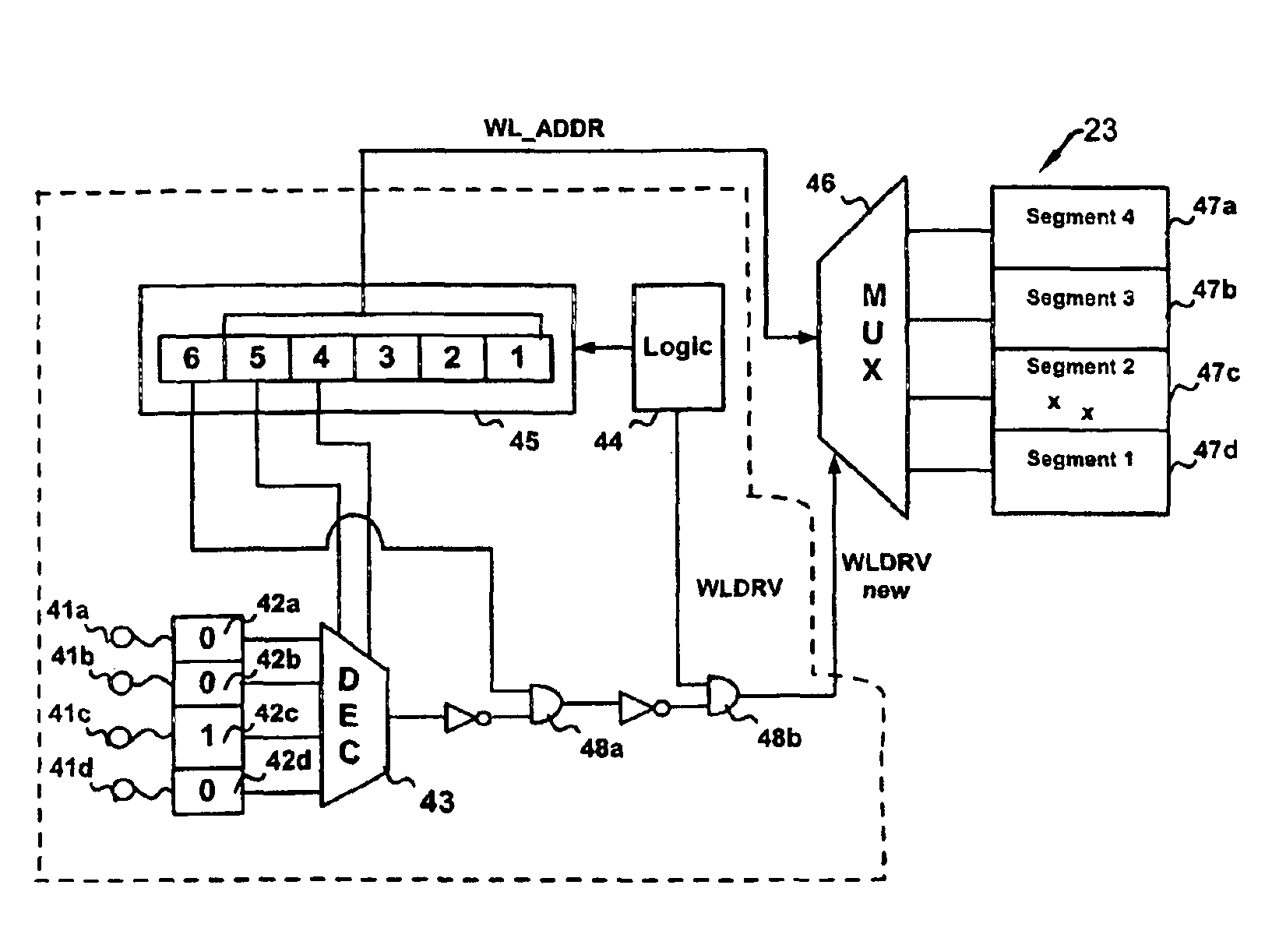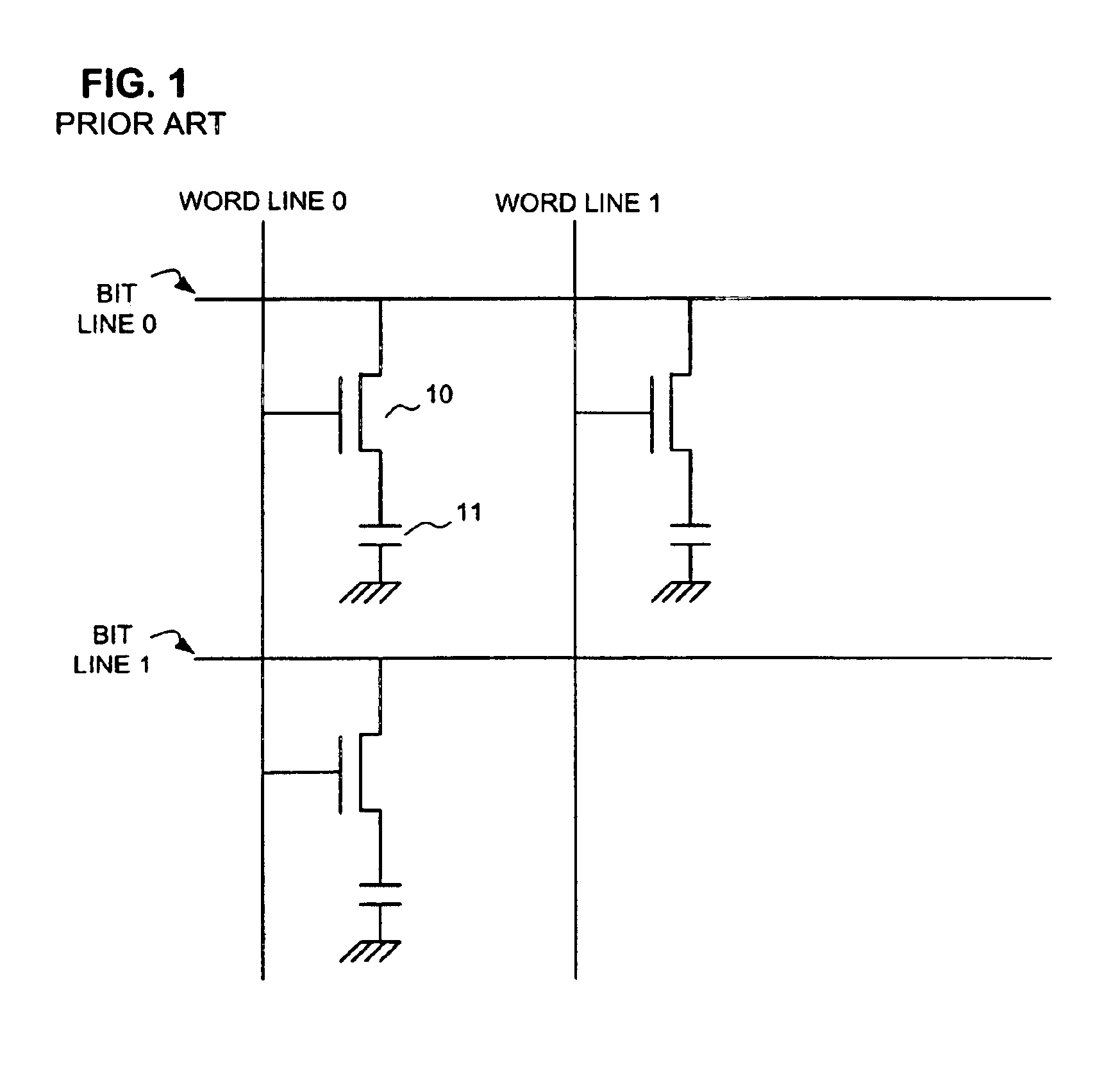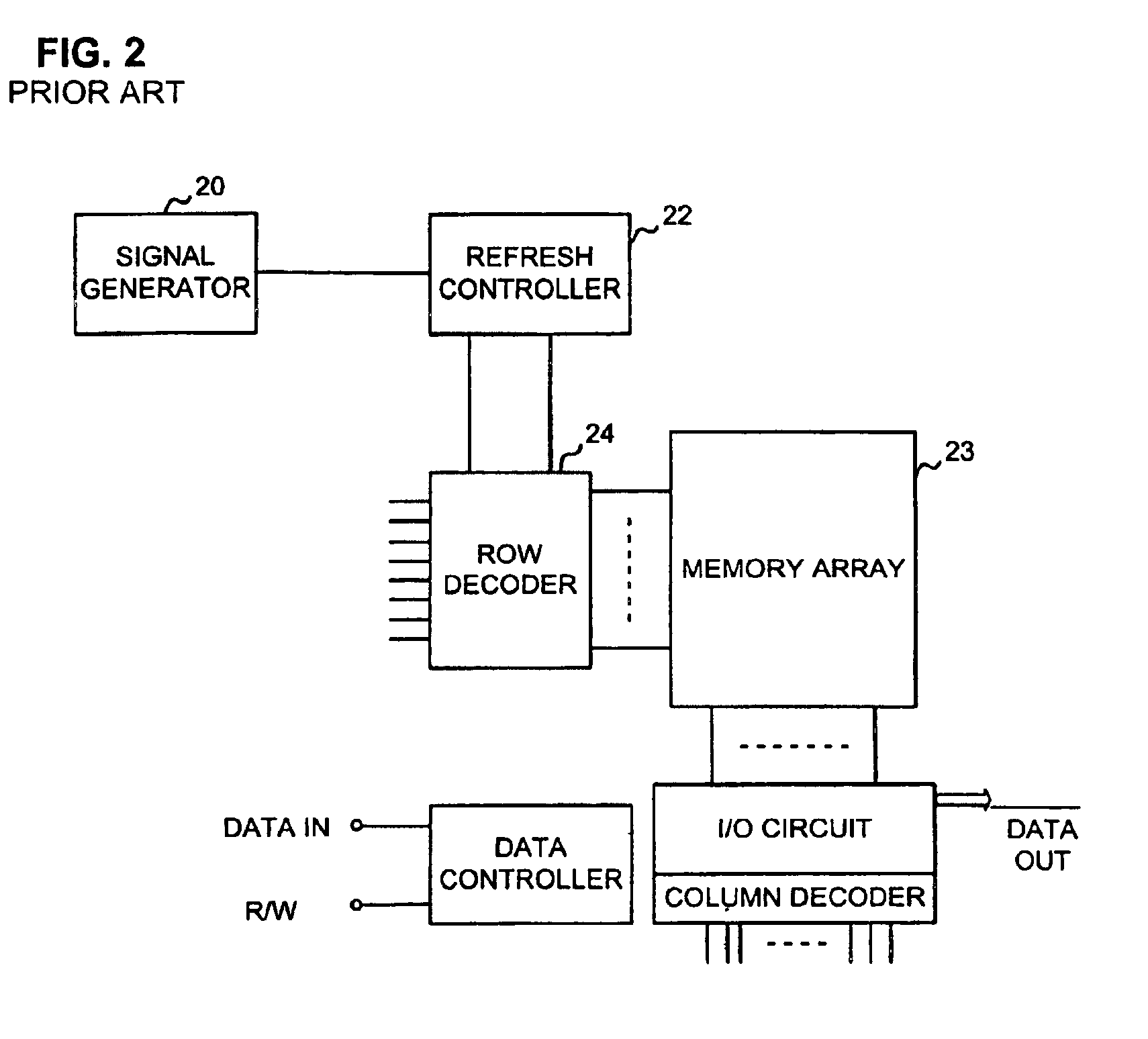Method and system for manufacturing DRAMs with reduced self-refresh current requirements
- Summary
- Abstract
- Description
- Claims
- Application Information
AI Technical Summary
Benefits of technology
Problems solved by technology
Method used
Image
Examples
embodiment
Programmable Logic Embodiment
[0044]An advantage associated with the fuse-selectable embodiment is that the DRAM chip can be easily altered by laser-blowing fuses according to the outcome of chip testing for irregularities in charge decay times. As alternative, other types of programmable logic can be employed. Depending upon the particular implementation, other types of programmable logic may provide additional flexibility for determining whether memory cells in a segment are to be refreshed on each passage, alternate passages, every third passage, etc.
[0045]FIG. 6 illustrates the use of programmable logic for controlling the refresh of memory cells in a plurality of segments, according to a generic embodiment of the present invention. In this example, as in FIG. 4, the memory array is once again divided into four equal segments, each containing 8 word lines. Instead of using a 6 bit counter, a 5 bit counter (54321) is used, in which the two most significant bits determine which seg...
PUM
 Login to View More
Login to View More Abstract
Description
Claims
Application Information
 Login to View More
Login to View More - R&D
- Intellectual Property
- Life Sciences
- Materials
- Tech Scout
- Unparalleled Data Quality
- Higher Quality Content
- 60% Fewer Hallucinations
Browse by: Latest US Patents, China's latest patents, Technical Efficacy Thesaurus, Application Domain, Technology Topic, Popular Technical Reports.
© 2025 PatSnap. All rights reserved.Legal|Privacy policy|Modern Slavery Act Transparency Statement|Sitemap|About US| Contact US: help@patsnap.com



